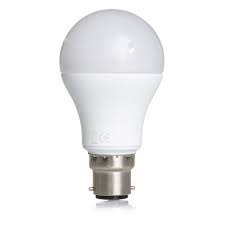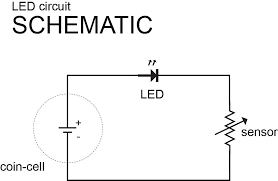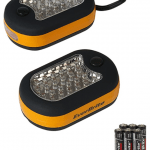Last Updated on March 21, 2021 by James
A LED or Light Emitting Diode is being used extensively all over the world in consumer electronics such as mobile phones, bike lights, traffic lights, work lights, outdoor lighting, and many more.
Due to their remarkable properties, it’s popularity is continuously increasing and it has also entered our homes as a replacement for fluorescent and incandescent light bulbs.
They consume very less power and are even very small in size. The colors emitted by the LEDs bulbs may seem picturesque, but let’s discuss how do these bulbs actually work?
What is an LED?
LED or Light Emitting Diode is a small semiconductor device which emits light when current flows through it.

LED is very similar to the general purpose diode; however, there is one difference that it can produce light in different colors.
When the positive (cathode) and negative (anode) terminal of a semiconductor device is connected to a voltage source, then it emits best LED work light of different colors.
Working of a LED Light Bulb:
A LED is a two-lead semiconductor light source which produces light when the p-n junction diode is activated.

When a considerable amount of voltage is applied to the leads, then the electrons recombine with the electron holes and produces photons as energy. This whole phenomenon is known as electroluminescence.
- The primary material of the light emitting diode consists of aluminum-gallium-arsenide whose atoms are tightly bonded in its original form. As there are no free electrons, therefore they do not conduct electricity.
- Through the process of doping, some impurities are added which introduces some extra atoms that disturb the complete balance of the AlGaAs.
- The newly added atoms either provides some free electrons (N-type) or consume the already existing electrons (P-type) which creates “holes” in the orbits.
- When electricity is passed through the material of N-type, electrons move from positive to the negative terminal and vice versa in the P-type of material.
- Due to the property of the semiconductor, electricity will never move in the opposite direction in both situations.
- The intensity of the light produced from the semiconductor device depends on the emitted photon’s energy level. It also depends on the number of electrons moving in the atomic orbits of the device.
- To move an electron from a lower to the higher orbit, it’s level of energy needs to be increased. Similarly, energy is released when an electron moves from higher to the lower orbits. The LED bulbs work in the same way.
- When the material is of P-type, the electrons move from the higher to the lower orbits which releases energy in the form of photos. The more the distance between the orbits, the higher the intensity of produced light.
The wavelength is an important factor that determines the different colors of light produced from the semiconductor devices. The exact color of the light depends on the energy band gap of the device through which the voltage is applied and the type of semiconductor device used.
For example, infrared light is emitted by the GaAs semiconductor, red and yellow light from the GaAsP semiconductor, and many more.
We also have a popular jobsite radio buying guide found here. We think you’ll love it. Feel free to read it.
Advantages of LED Bulbs:
- Efficiency – The LED bulbs produce much more lumens as compared to the regular incandescent bulbs in the same power consumption. Its efficiency is not depended on the shape, size, and other factors, unlike the fluorescent bulbs.
- Color – The LEDs can emit light in any color whereas the traditional lighting methods have to use color filters.
- Size – LEDs can be very small in size as compared to the other lighting methods.
- Cycling – You can switch on and off the LED bulbs more often without any failure as compared to the traditional lighting methods.
- Lifetime – The LEDs have a very long life than the other lighting solutions. It lasts up to 50,000 hours before failing, whereas the incandescent bulbs last up to 2000 hours, and fluorescent bulbs up to 10,000 hours.
- Shock Resistance – The LED bulbs can withstand external shock, unlike the traditional bulbs, which are fragile in nature.
Disadvantages of LED Bulbs:
- High Price – The cost of the LED bulbs is higher than the conventional lighting solutions.
- Voltage Sensitivity – The LED bulbs are voltage sensitive and require a constant voltage to function properly. The current and voltage fluctuation may decrease the lifetime of the bulb.
- Area Light Source – LED bulbs produces light in the form of Lambertian distribution. Therefore, it is difficult to use them in the spherical light field as they cannot produce divergence more than a few degrees.
- Electrical Polarity – The incandescent and fluorescent bulbs will produce light irrespective of the electrical polarity. However, the LED bulbs will only function with correct electrical polarity.
- Impact on Insects – The insects are attracted towards the LED bulbs more than the sodium-vapor lights. Scientists are looking to implement new ways not to harm insects.
